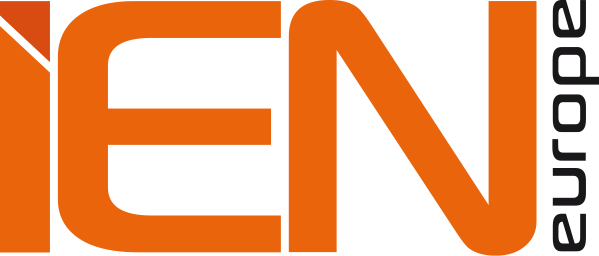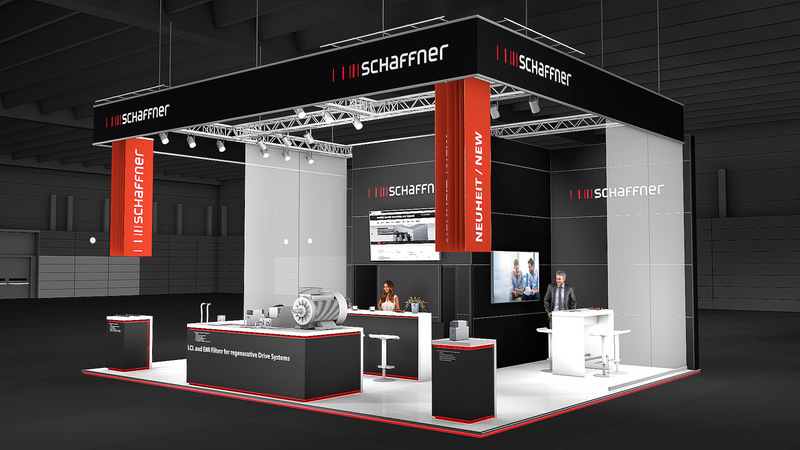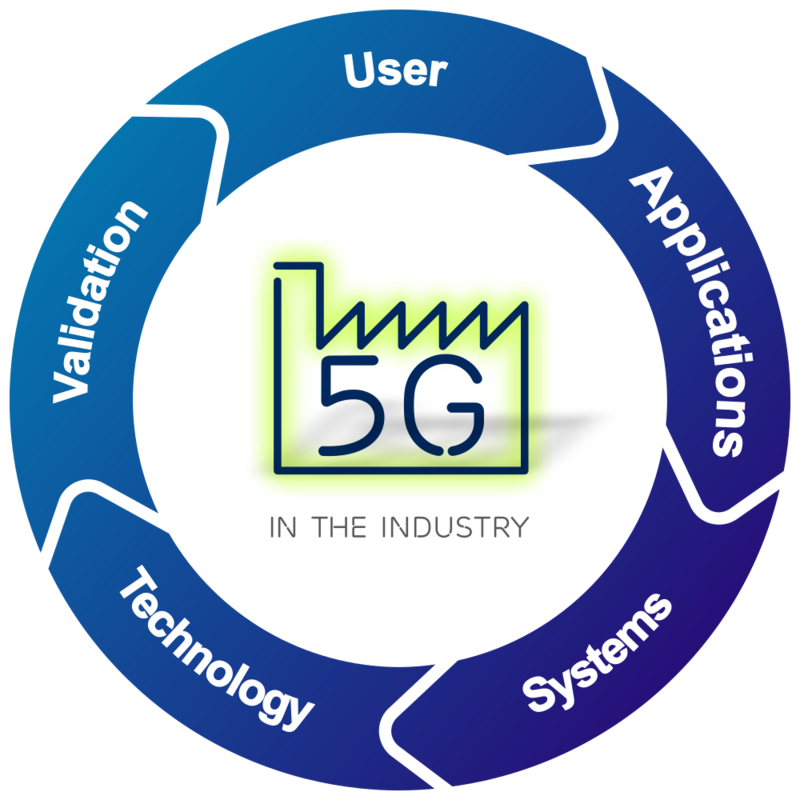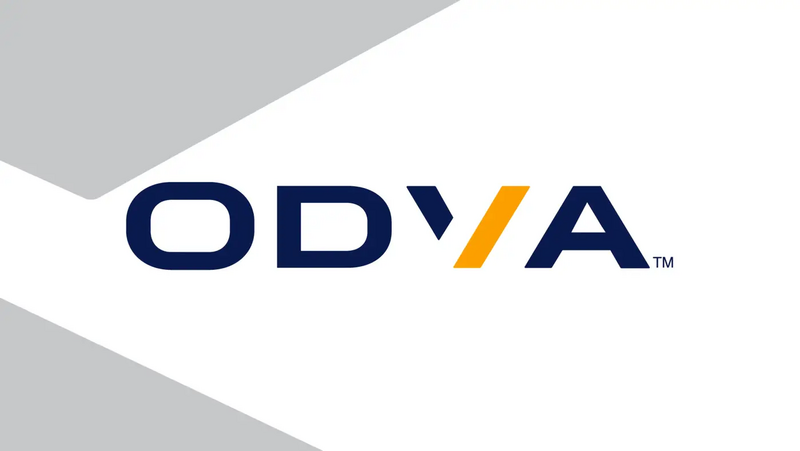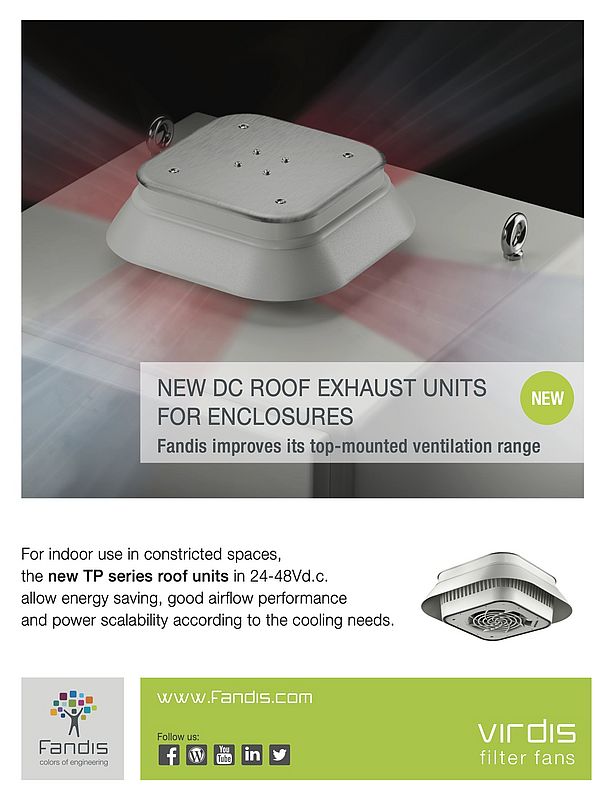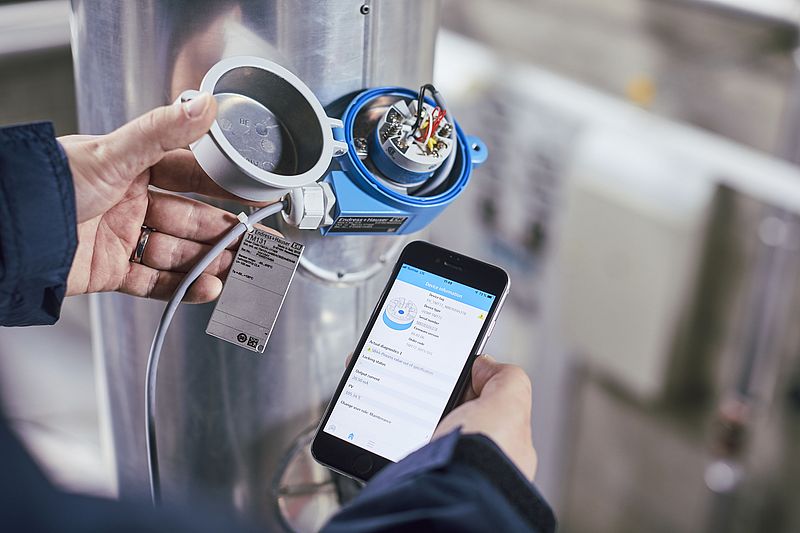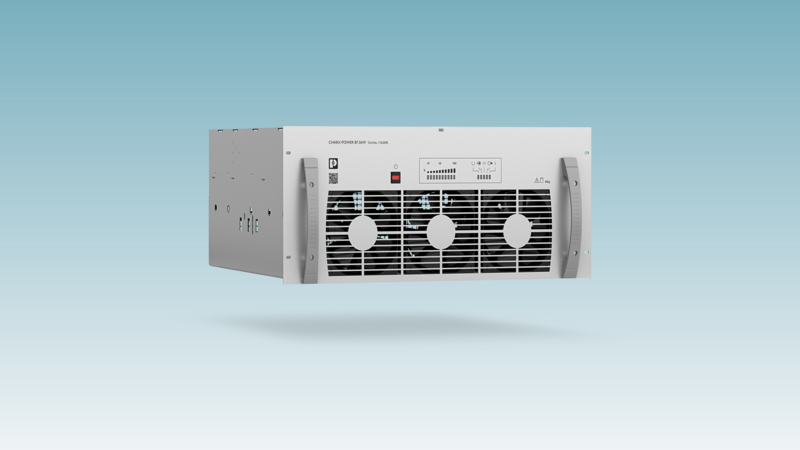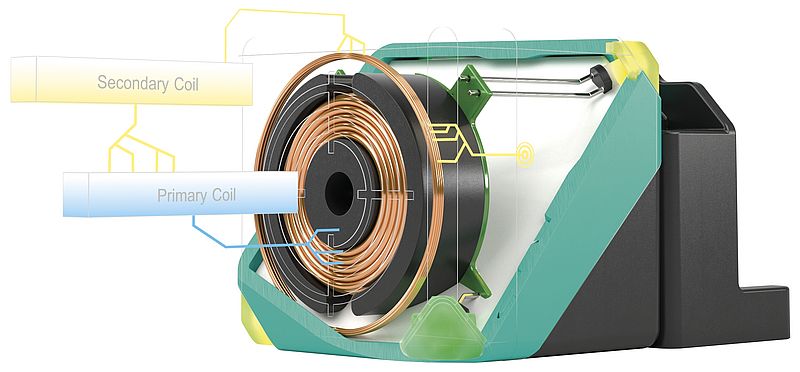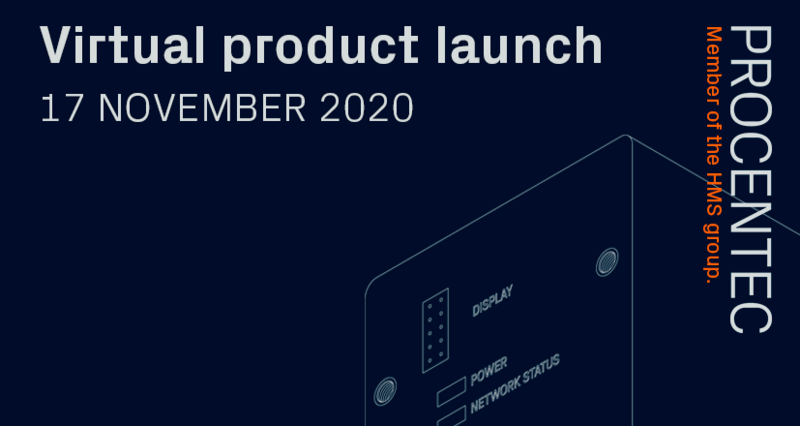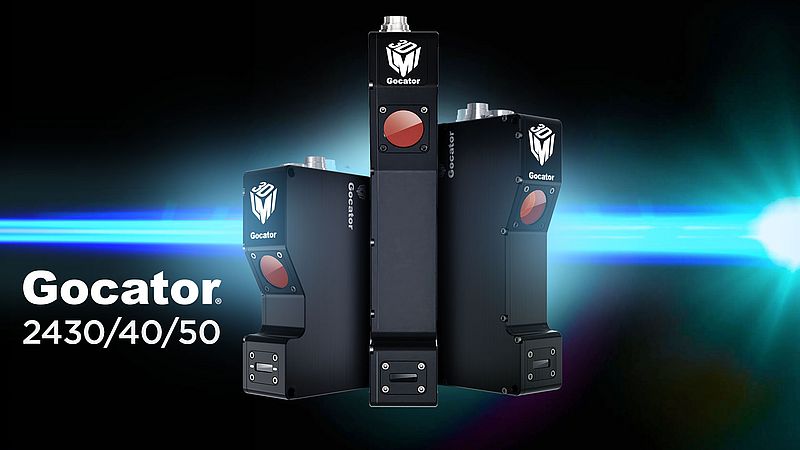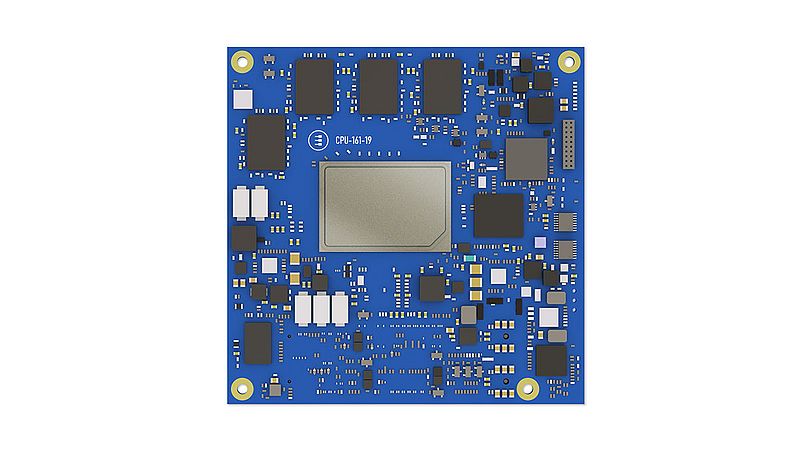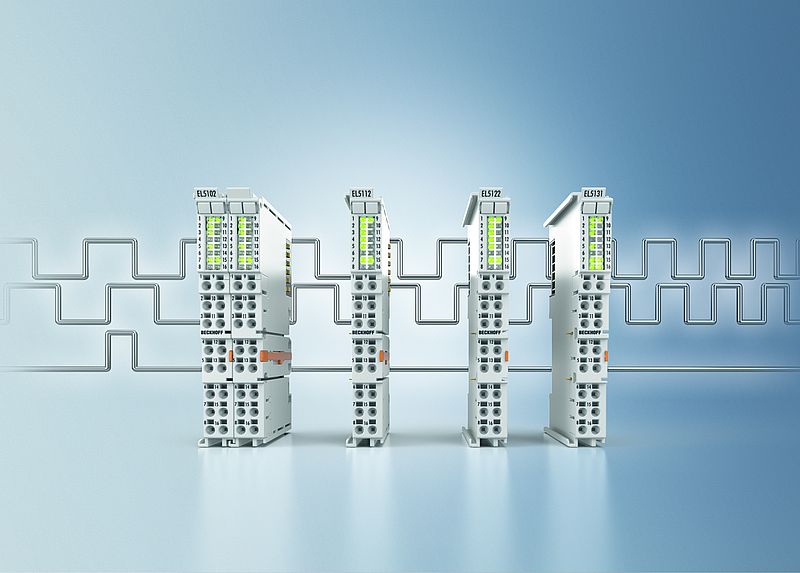Quick access
SPS News: Schaffner and Pepperl+Fuchs2 SPS News: CC-Link Partner Association3 Covid-19 Interview: Safety for the New Normal4 5G Technology5 SPS News: ODVA and Rockwell Automation6 Fandis' TP Series7 SPS News: OPC Foundation and Endress+Hauser8 Article: ADI OtoSense9 SPS Product News: Harting and Phoenix Contact10 SPS Product News: Pepperl+Fuchs, Procentec, Beckhoff11 SPS Product News: LMI Technologies and Eurotech12 SPS Product News: Beckhoff and Molex13 SPS Product News: Bosch Connected Industry14Companies in this issue
Fandis S.p.A.7 Schaffner Group210 Analog Devices GmbH9 Beckhoff Automation GmbH13 CLPA Europe3 EuroTech SpA12 Fandis S.p.A.7 LMI Technologies GmbH12 Pepperl+Fuchs SE11 Phoenix Contact GmbH & Co. KG10 Procentec11 Robert Bosch GmbH14 Schaffner Group2 Schildknecht AG5 Siemens AG4 TTI, Inc Europe13
Visit Schaffner at SPS Drives 2020 Virtual Exhibition
EMC/EMI filters will be showcased for regenerative drive applications
Motors & Drives
Schaffner invites visitors no longer able to visit the SPS exhibition in Nuremberg to join them at their virtual exhibition stand. Schaffner has created their own digital exhibition including new releases such as their latest LCL filters (FN6840) and new versions of EMI/EMC Filters (FN3840).
An easy to navigate, up-to-date virtual exhibition concept
The virtual exhibition will also feature the launch of a new IEC inlet (FN9274) for medical or isolated power supply applications, which provides product designers 2 MOPP (Means of Patient Protection) safety protection "out of the box", eliminating the requirement for any further EMC or isolation components
In order to visit the virtual exhibition customers should complete a simple online form to receive joining instructions before the 24th of November. The form can be found here.
Pepperl+Fuchs gets China Compulsory Certification (CCC) on Explosion Protection Portfolio
Several hundred devices from Pepperl+Fuchs' Explosion Protection Division have been approved in accordance with China Compulsory Certification (CCC). This makes export of products to China possible without restrictions
Automation, Sensor Technology
With immediate effect, several hundred devices from Pepperl+Fuchs' Explosion Protection Division have been approved in accordance with China Compulsory Certification (CCC) and can therefore continue to be imported into China. Since October 1, 2020, CCC conformity is required for the export of a large part of explosion protection devices to China. If the CCC regulations are not observed, the imported goods are detained at the Chinese border or returned to the sender. NEPSI, as well as CNEx certificates, which were the national explosion protection certificates in China before the introduction of the CCC requirement for explosion protection products, are no longer sufficient.
Timely processing of the certification
As a reliable partner with worldwide approval competence, Pepperl+Fuchs, together with its Chinese partners, has been working early on and since the announcement of the new regulations to develop the prerequisites for timely processing of the certifications. As a result of this complex process, Pepperl+Fuchs' customers and partners can now continue to purchase products for explosion protection without restrictions in and for China. These include, for example, isolating barriers, fieldbus and remote I/O components, surge protection devices or terminal boxes, control stations, and distribution solutions.
CC-Link IE TSN in the Spotlight at SPS Connect
The CC-Link Partner Association will shed light on its latest technology as an enabler for connected industries
Automation, Industry 4.0
The CC-Link Partner Association (CLPA) will be part of the SPS Connect digital automation hub from 24th-26th November 2020. During the event, the organisation will demonstrate how its latest technology, CC-Link IE TSN, is an enabler for Connected Industries, being the first open gigabit Ethernet with Time-Sensitive Networking (TSN) capabilities.
CC-Link IE TSN offers a key technology to converge operational technology (OT) and information technology (IT), supporting the creation of Industrial Internet of Things (IIoT) platforms that are at the heart of Industry 4.0 data-driven intelligent manufacturing plants and enterprises. SPS Digital attendees interested in learning more about TSN and how it can enable this convergence will be among the first to be able to download the CLPA’s latest white paper on the topic.
An overview on how the technology is evolving and how to implement futureproof TSN-driven communications
The document, titled ‘Time-Sensitive Networking (TSN) – The Case For Action Now!’, put the focus on what business benefits TSN can deliver to a range of companies, such as device vendors, machine builders and end-users, by acting as the foundation of converged network architectures. In addition, it gives an overview on how the technology is evolving and how to implement futureproof TSN-driven communications by adopting CC-Link IE TSN.
Visitors to the CLPA’s profile will also be able to watch videos, and other key documentation will be available. During SPS Connect, the CLPA is also planning to hold a virtual press conference where an important announcement will be made in regard with the strategic direction of the association.
A solid framework to share ever-increasing volumes of data across an enterprise and leverage the power of Big Data analytics
Last, leading automation and network technology experts will be available throughout the event to provide additional information and discuss the benefits of its technologies for manufacturers. John Browett, General Manager at CLPA Europe, comments: “SPS is a key event for the CLPA and we are delighted to take part in this year’s edition via the SPS Connect platform. We look forward to meeting with attendees and sharing how our technologies can support the creation of the Connected Industries of the future. Our latest solution, CC-Link IE TSN, provides a solid framework to share ever-increasing volumes of data across an enterprise and leverage the power of Big Data analytics. As a result, it is ideal to implement advanced IIoT architectures for Industry 4.0 applications.”
According to Siemens, Safety is Essential for the New Normal
The social distancing solution from Siemens based on the Real-Time Locating System (RTLS) can be the solution to keep production running without putting the safety of employees in the background
Automation, Covid-19, Industry 4.0
During the corona pandemic many companies are faced with the question of how to keep their production running without putting the safety of employees at risk. One solution: the social distancing solution from Siemens based on the Real-Time Locating System (RTLS), which is explained here in an interview with Nicole Lauther, Siemens USA, who is coordinating the global roll-out of the solution.
IEN Europe: Nicole, social distancing is considered a key measure for containing COVID-19, at least in Germany. What does this mean for companies?
N. Lauther: In principle, we at Siemens are in the same situation as our customers. Either there was a complete shutdown, so that only a minimum of emergency personnel was allowed into the plants, or a plant was considered to be essential and had to continue operating. But since many countries have at least started easing their restrictions, everyone must find a way of resuming work or returning to the usual work-load – but in a safe working environment. And in this respect, according to virologists, keeping your distance is still the best measure if you don't want to wear a protective mask for an entire shift.
IEN Europe: Now, maintaining a minimum distance is not a particularly complicated rule. Why do customers ask for technical support?
N. Lauther: This is a combination of several things. On the one hand, you may simply forget the distance rule in your everyday work and stand close to other people in production, for example, in order to solve a problem on a machine. Secondly, some encounters cannot be avoided, for example in narrow aisles – this is where those in a position of responsibility need transparency to identify such points. Perhaps a company can then reposition machines, introduce one-way systems for the walkways, and so on. And finally, there is the issue of tracking in the event of an infection: with whom did an infected employee come into contact? In which areas of the plant were the potentially infected employees working that is which parts need to be disinfected? So, one is a warning function in everyday life, while the other concerns management in the case of a corona outbreak.
IEN Europe: How does the Siemens solution for social distancing work?
N. Lauther: Our solution is based on Simatic RTLS, a real-time radio locating system. Actually, it is used to optimize production processes, for example by continuously locating materials, products, and production equipment. For this purpose, a certain area is equipped with RTLS gateways, which can then locate the transponders in fractions of a second.
For social distancing, every employee now receives an RTLS tag (transponder), which has a large display and is worn visibly on the clothing like a name tag. This tag transmits the location data to a software program (SieTrace), which uses an algorithm to determine whether employees are standing too close together. This information is also shown to the employees on the display. If users do not keep their distance, the tag flashes and displays a warning. The design can be changed according to customer requirements. In addition, the positional data is stored in a database.
IEN Europe: What does it need this database for?
N. Lauther: There are two issues at stake. Firstly, is an adequate distance being maintained? Are there any parts of the plant where potentially dangerous encounters occur repeatedly? And for what length of time do the employees stand close to one another? SieTrace can display a heat map for this purpose, so that those responsible can see when and where risky situations occur and take the appropriate organizational actions to eliminate these risks.
Secondly: in the event of an infection, who was too close to which employee and for how long? Based on this information, it is possible to work out who needs to be tested for the coronavirus or even sent into quarantine – but not the entire workforce. And the software also indicates which parts of the plant need to be disinfected - but again, not the entire site. In this way, the data helps to manage a coronavirus outbreak.
IEN Europe: Coronavirus apps for smartphones are now available in many countries - for example in Germany. So why do you need an RTLS solution?
N. Lauther: There are several reasons for this. For one, reception is poor in some plants, so the smartphone apps are inaccurate or do not work properly at all. In addition, some plants prohibit the use of a smartphone, for example due to plant safety or security regulations. A third problem is the perception of an alarm. Our RTLS transponders are worn in a clearly visible way, so that not only the employees themselves, but also their co-workers in the surrounding area can hear the alarm. And then some apps (like those in Germany) are designed in such a way that the data is not collected in a database. This is fine for personal use on the street or in the supermarket - but within companies, it leads to a considerable risk and limits the options for reacting to an infection.
IEN Europe: Indoors, the apps have a considerable disadvantage: they do not recognize any structural partitions. If there is a wall between us, we can safely work at a distance of less than 2 meters - but the app might still trigger an alarm. How is it with RTLS?
N. Lauther: Locating systems such as Simatic RTLS often use "metadata", in other words, information about the structural surroundings. This enables us to clearly identify partitions and the like and to filter the alarm messages accordingly. So, problem solved!
IEN Europe: Perhaps this is a typical German question, but what do the data protection authorities have to say about your recording of data on employees' movements?
N. Lauther: This is not just a German problem, but employees in other countries are actually also worried about what happens to their data. Are people checking how long their breaks are, or which colleagues are chatting to each other? For this reason, we do not record any personal data with SIMATIC RTLS, but only a unique number (tag ID). The assignment to the individual employee, if desired, is done by the company, and in this respect an organizational regulation can be superimposed in the company. It may be specified, for example, that this assignment only be made in justified cases with cooperation between management and the works council. Each company has its own system and must also take different national regulations into account. The database is also encrypted, and access is protected. And when the system is introduced, certain areas such as changing rooms or toilets can be excluded altogether.
Ultimately, those responsible in the companies must get together and decide how to balance the safety requirements on the one hand and the personal rights of the employees on the other. And then it must be clear: dispensing with technical aids completely does not solve the problem!
IEN Europe: Now, if I, as a customer, am enthusiastic about your solution because it helps me to get my production running again, how quickly can I install Social Distancing and Simatic RTLS?
N. Lauther: The important thing here is that we are talking about existing technologies. The system can be operated in standalone mode, so that no major effort is necessary for integration. In this respect, the system can be introduced at very short notice – currently we already have several test installations in the USA.
IEN Europe: Can I also integrate the app in my control center software?
N. Lauther: Yes, of course; we offer this as a service to our customers.
IEN Europe: And what about my investment if a vaccine or medicine becomes available?
N. Lauther: The great advantage of an RTLS-based solution is that the tracking can be used like an infrastructure for a variety of applications. And RTLS also offers great advantages for the actual production management, which are reflected in a swift return-on-investment (RoI). Installing Simatic RTLS thus kills two birds with one stone: customers can introduce a solution to the coronavirus problem at very short notice while at the same time investing in the future viability of their operations to develop strong competitive advantages in both the medium and long term.
5Gang - 5G Applied in the Industry
Fast, robust, reliable: 5Gang stands for efficient and powerful networking in production using 5G and cloud technologies. Focal points are firstly flexible production and secondly automatic status detection and control of the "factory of tomorrow''
Industry 4.0
To withstand the global competitive pressure in industrial production, companies must accelerate their manufacturing processes and optimize the use of resources. At the same time, they must react quickly and flexibly to individual customer and market requirements. However, flexibility is often limited by optimized processes. What is needed are new processes that make both possible: Cost savings through improved machine utilization and increased flexibility.
To make this possible, 8 partners worked together from March 2017 to November 2020 on a project with the aim of researching and developing an industrial communication concept of 5th generation mobile radio technology (5G). The 8 partners are:
- Ericsson GmbH, Herzogenrath
- Robert Bosch GmbH, Renningen
- Sick AG, Waldkirch
- Schildknecht AG, Murr
- Forschungsinstitut für Rationalisierung (FIR) e. V. an der RWTH Aachen
- Werkzeugmaschinenlabor (WZL) an der RWTH Aachen
- Technische Universität Dresden
- Technische Universität Kaiserslautern
The focus of the project is on the following two aspects:
1. application of 5G radio and network technology in the production
The aim is to adapt manufacturing components quickly and dynamically to different requirements, to design processes accordingly flexible and to enable real-time coordination of production processes.
2. efficient networking of a large number of sensors
Massive sensor networks form the basis for a variety of applications in the context of Industry 4.0 - from detailed condition monitoring of a plant, to predictive maintenance, to the detection of anomalies in the ongoing production. Within the scope of 5GANG, the energy efficiency of wireless sensor nodes is optimized and the real-time capability of such a system is improved.
Virtual, cross-location industrial networks will be connected along the entire value chain based on 5G technology. In the 5GANG project, existing industrial communication solutions are enhanced by 5G technologies in such a way that they are suitable for use in Industry 4.0.
Innovation and perspectives
Virtual, cross-location industrial networks based on 5G allow for better networking of processes along the value chain. At a company's neighboring production sites, urgent orders can be routed efficiently through the production lines without affecting normal operations. This contributes to maintaining the competitiveness of Germany as a production location in international comparison.
Use Cases
Flexible production
The challenges in industrial communication are that the number of sensors and the amount of data is constantly increasing. At the same time, production is to become more flexible, i.e. wireless instead of cable based. However, current solutions via W-LAN are not sufficiently reliable. At the beginning of the project there were no commercial 5G products available, so that the project worked with 5G Ready products, which are quasi the precursors of 5G products. This use case tests to adapt the production as much as possible to changed customer requirements at short notice.
Continuous freight forwarding for horizontal synchronization in the value chain. Extension of wired standard automation solutions by 5G radio solutions. The AGV control system is extended and optimized by sensors in the infrastructure. The following aspects are examined in particular: Extension of wired standard automation solutions by 5G wireless solutions. A continuous goods traffic for horizontal synchronization in the value chain. AGV control extension and optimization through sensors in the infrastructure.
Distributed Sensing & Control
In the factory floor application environment, the aggregation of massive sensor data requires efficient connection and networking of many sensors. It was about the question of how data can be flexibly routed, signal sources can be separated for analysis and efficiently aggregated for further processing. The TU Dresden focused on the area of networking. Bosch focused on the use case Predictive Maintenance based on audio data as a basis.
Technological background
Campus networks
Germany is a pioneer in the design of local/regional 5G networks. Local and regional frequencies in the range of 3,700 to 3,800 MHz can be applied for and operated for 5G applications independently of network operators.
Virtualisation
In 5G, the increasing "softwareification" or virtualization in the area of network infrastructure will play a major role. Software Defined Network (SDN) and Network Function Virtualization (NFV) are further key features of 5G. The 5G infrastructure will bring together the basic information technology resources, storage and computing power, through its high-performance network architecture and offer it to other application-specific functional areas.
Massive Sensor Networks
In Massive Sensor Networks (MSN) today, many sensors are typically connected via an IoT platform. The access to the sensors is typically done via radio to be able to connect many sensors easily. This requires radio access technology and typically IoT Gateways to connect existing sensors to the network. In order to use different transmission technologies, including 5G, existing protocols (e.g. Profibus) are tunneled. Sensor networks also require efficient data transmission, which for example allows an operating time of 10 years.
Research results
The primary goal was to develop an architecture for resilient, industrial communication - based on 5G technology. This was implemented and validated as a demonstrator in the form of a local industrial 5G campus network.
The most important partial results are:
- An architecture for 5G in the industry.
- Transformation of wired sensors and actuators to 5G based sensor systems.
- The integration of industrial solutions into 5G Campus networks.
- Industrial Cloud solution - fast, robust, reliable, local.
- Requirements and use cases for future 5G based industrial production systems.
- Compressed Sensing and Distributed Source Coding, Network Coding for more energy efficient and reliable data transmission in massive sensor networks.
- Direct "Blind Source Separation" as network function for data analysis and monitoring.
- Connectivity of a distributed production environment
- Industrial IoT Gateways for protocol tunneling of standardized fieldbus systems over a 5G campus network.
Further research needs
5Gang focuses on cloud solutions in production. In the future, scenarios in which local and central data centers are networked with each other will become more important, keyword "hybrid cloud systems". There are some important aspects here for which there is still a need for further research:
- Orchestration of the cloud environment
- Operation and maintenance of 5G equipment
- Connection of local data centers/industrial clouds to central data centers
- Connection of private and public 5G networks
- Better aggregation of data from different applications in a local cloud through hardware standardization
Transfer of the project results
The results flow into product development and further research. Ericsson uses the results to define further research projects, in particular to further develop industry compliance. In the long term, one product could be the development of an industry cloud, in which computers unite industrial applications that were previously distributed on different servers.
For Bosch, the algorithms researched in the 5Gang project and their integration into a corresponding platform provide a good foundation for further advancing the research and development of condition monitoring, predictive maintenance and anomaly detection in the context of Industry 4.0.
For Schildknecht, the results offer an optimal opportunity to develop new products and business models and to implement them with the partnerships established.
The results of 5GANG are used in teaching. On the base of 5GANG, cooperation for further research and technology projects were established outside the project, e.g. with the project partners Ericsson and Sick AG or other external partners such as Audi.
Potential for Disruption von 5G
Factories become more flexible through reliable radio communication and through fast integration of public data centers in connection with local data storage. The aggregation of the various applications and data of a local cloud is simplified by standardizing the hardware / software.
Whether 5G can become a game changer depends on the angle of view. Disruptions or changes in markets often occur when new developments lead to high cost savings or high profit opportunities or are very convincing solutions and these developments are available for a mass market. Related to 5G, a disruption for the mass market is more likely to last. However, since 5G plays a role worldwide, it offers the potential to be available as a low-cost standard technology in the future.
2G - has promoted mobile voice, 3G music streaming, 4G video streaming. 5G will primarily enable industry applications such as real-time cloud applications augmented reality (AR) / virtual reality (VR) with a disruptive potential, as 5G campus networks will also provide the legal framework.
Example: Radio control of trucks used in dangerous places in mines can help to protect employees.
By Martin Stümpert, Project Lead & Contact at Ericsson
Harting Becomes a Principal Member of ODVA
Harting increases commitment to ODVA and EtherNet/IP to become ODVA's newest principal member alongside Cisco Systems, Endress+Hauser, Honeywell, Omron, Rockwell Automation, and Schneider Electric
ODVA is pleased to announce that Harting, one of the world’s leading suppliers of industrial connectivity technology, has become a principal member of ODVA alongside Cisco Systems, Endress+Hauser, Honeywell, Omron, Rockwell Automation, and Schneider Electric. The primary focus of Harting’s activities in ODVA will be through Harting, Inc. of North America, an industry leader in device connectivity, installation technology, and smart connectivity that is a part of the global Harting Technology Group.
Harting’s enhanced participation in ODVA reflects its growth in expertise and leadership in industrial Ethernet and connectivity throughout the automation industry, as well as the company’s commitment to EtherNet/IPTM products. Harting is working to drive the advancement of industrial Ethernet as a part of IIoT and Industry 4.0, and its increased participation in ODVA will aid efforts to identify and standardize different technologies and devices that will be needed for the automation industry to successfully implement IIoT.
Harting support to EtherNet/IP and DeviceNet®
Harting has worked through ODVA and with its fellow ODVA Members for many years to promote the adoption of industrial automation communications network standards, to engage in technical development and enhancement activities, and to promote conforming products. Harting supports both EtherNet/IP and DeviceNet® technologies with cable and connector solutions. Harting products include heavy duty connectors, interface/board connectors, custom cabling, and a wide portfolio of solutions for industrial communications, especially Industrial Ethernet. Key served market segments include machinery/robotics, automation, transportation, wind energy, and power generation & distribution. Harting provides data, signal, and power via complete connector installation concepts for industrial infrastructures, setting new standards with connectors such as the Han series. Harting has helped drive the adoption of industrial Ethernet over the past years, especially with the launch of their T1 Industrial connector for Industrial Single Pair Ethernet.
“EtherNet/IP is a critical communication network for the future of discrete and process industries, especially with the advent of Industrial Single Pair Ethernet and Ethernet-APL,” stated Jon DeSouza, President and CEO of Harting Americas. “Harting is looking forward to continuing to provide enhanced smart connectivity solutions for EtherNet/IP networks to drive faster decision making and error correction as well as prevention. By joining ODVA as a principal member, Harting is increasing its contribution to the advancement of EtherNet/IP and related ODVA technology and standards to prepare for OT and IT convergence. IIoT and Industry 4.0 continue to gain traction and drive industry advancement, making now the perfect time for Harting to increase its commitment to ODVA.”
“ODVA welcomes the increased contribution of Harting as a principal member as well as their expertise in smart connectivity,” said Dr. Al Beydoun, President and Executive Director of ODVA. “Their participation as a principal member will contribute to and grow ODVA’s ability to move the connectivity of the industrial enterprise forward to meet the increased demands of IIoT and Industry 4.0.”
Leading the development of the industrial Ethernet
With a diverse array of leading industrial automation suppliers, such as Harting, as principal members, ODVA is well positioned to continue leading the development of the industrial Ethernet from plant floor automation control to cloud level business analysis. Manufacturers will be able to leverage a complete, plant-wide network infrastructure for discrete, process, motion, safety, and security applications with CIP and EtherNet/IP to meet the needs of both today and tomorrow.
ODVA will formally introduce Harting as a principal member during the 2020 Q4 media briefing that corresponds with the timing of SPS Connect. The introduction will include an overview of Harting and its reasons for joining ODVA as a principal member. ODVA is delighted to add a company of the caliber of Harting as a principal member to continue to drive the future of industrial automation.
PTC and Rockwell Automation Extend Strategic Alliance
Both organizations will continue to leverage each other’s resources, technologies, industry expertise, and market presence to seamlessly serve their customers through 2023 and beyond
Automation, Covid-19, Industry 4.0
PTC and Rockwell Automation recently announced the expansion and early extension of their strategic alliance. This extension will ensure continuity in both companies’ sales and product development efforts and expand the agreement to include PTC’s product lifecycle management and software as a service (SaaS) products. It will streamline both companies’ commercial efforts to extend a comprehensive digital thread solution, from upfront design through the operate, maintain and optimize-lifecycle stages.
PTC will also offer Rockwell Automation’s virtual machinery simulation and testing software to its own customer and partner network. Under the agreement, both organizations will continue to leverage each other’s resources, technologies, industry expertise, and market presence to seamlessly serve their customers through 2023 and beyond.
Digital transformation software suite
The companies’ primary joint offering, FactoryTalk InnovationSuite, powered by PTC, is the industry’s first comprehensive digital transformation software suite that offers fully integrated Industrial Internet of Things (IIoT), edge-to-cloud analytics, manufacturing execution systems (MES), and augmented reality (AR) – required for the connected enterprise. FactoryTalk InnovationSuite makes it simple to rapidly develop, operationalize, and globally scale innovative solutions to operations.
“Our selection of FactoryTalk InnovationSuite, powered by PTC could not have come at a better time for our company,” said Teja Schubert, Director, Controls, Automation and Technology, Norbord, an international producer of wood-based panels. “As the first wave of Covid-19 hit, it became even more important to have a platform that helps us reduce costs, improve our employee's experience, and make better use of our maintenance and training efforts. This ever-important alliance has made it easier for our company to navigate the Covid-19 pandemic so far, and we look forward to leveraging future solutions.”
As manufacturers reset their operations, competitive pressures and demands for better financial performance have accelerated the need to digitally transform products, processes, and people across all business levels. PTC and Rockwell Automation’s industry-leading digital manufacturing solutions provide manufacturers with robust end-to-end digital thread capabilities, empowering them to continue their digital transformation initiatives amid the global pandemic.
“Over the past two years, PTC and Rockwell Automation teams have combined great innovation to offer our customers the world-class FactoryTalk InnovationSuite solution,” said Blake Moret, chairman and CEO, Rockwell Automation. “The expansion and early extension of our contract with PTC signifies the increasing value of this strategic alliance and its importance to the Connected Enterprise.”
Jim Heppelmann, president and CEO, PTC, said: “The strategic alliance with Rockwell Automation has expanded our reach and our capabilities as we champion Industry 4.0 initiatives around the world. The powerful impact of our offerings amid the current macroeconomic environment proves the market’s need for this collaboration.”
OPC Foundation Welcomes Emerson to Its Board of Directors
Emerson also joins the OPC Foundation Field Level Communications (FLC) initiative to drive a holistic approach to sensor and device level communications across process and factory automation industries
Automation, Industry 4.0
The OPC Foundation is proud to announce Emerson has joined its Board of Directors and sincerely welcomes Peter Zornio, Chief Technology Officer for Emerson Automation Solutions, as Emerson’s representative on the Board of Directors. Emerson is one of the world’s largest automation suppliers, providing engineering services and automation technologies to process and discrete manufacturing industries.
Emerson has a long history with the OPC Foundation. As one of its founding members, Emerson played an important role in the development and adoption of the first OPC data connectivity standard and contributed to the development of OPC UA, today’s open data interoperability standard. Emerson supports OPC UA initiatives by participating in OPC Foundation working groups and by adopting OPC UA in a wide variety of its family of products.
A de facto standard for IT and OT integration
Peter Zornio says: “OPC technology is well established in the automation space as the de facto standard for application-level communications. It also provides integration between operations technology (OT) and the IT world, including cloud-based environments. We look forward to growing that role, as well as working with the OPC FLC initiative on expanding OPC technology into real-time communications between control and field-connected devices. OPC is the best candidate to have a single communication standard cover the entire scope of automation architecture from intelligent field devices to the cloud.”
Peter Lutz, Director FLC Initiative: “Currently, the OPC Foundation is extending use of OPC UA down to the level of sensors and devices on the shop floor via its Field Level Communications (FLC) initiative. The value that a major player like Emerson brings to this initiative is important from both technical and market messaging perspectives. First, OPC Foundation Working Groups benefit from extensive Emerson field level expertise. Second, with its strong support for ongoing OPC UA standard development for use in both process and discrete industries, Emerson helps send a clear message to the market: OPC UA plays an equally important role in both verticals.
Stefan Hoppe, President and Executive Director, OPC Foundation commented: “It is gratifying to welcome a company of Emerson’s stature to the OPC Foundation Board of Directors. Working together with Emerson and our other valued board members, the OPC Foundation is now better positioned to deliver on its directive to provide the world with the best single data connectivity and interoperability standard for use throughout the enterprise, regardless of the industry sector.”
Endress+Hauser Establishes Internet Security Standards
The Internet Engineering Task Force (IETF) has chosen the SmartBlue CPace protocol from Endress+Hauser as a recommended internet standard for password-protected access to instruments
Automation, Sensor Technology, Test & Measurement
The cryptography working group within the IETF standards organization (Internet Engineering Task Force) has chosen the Endress+Hauser-developed CPace protocol as a recommended method for use in internet standards. After undergoing extensive security analyses, the CPace protocol emerged as the winner in a competition among submissions from developers at several well-known companies.
Secure access to field instruments is of the highest priority for operators across all branches of the process industry. Modern plants contain hundreds or thousands of measurement and control instruments that must be accessed remotely with growing frequency. These field instruments also have to be installed, monitored or serviced on a regular basis. Secure password-based user authentication plays a special role today, especially when devices with digital interfaces are involved.
Security with user-friendly password lengths
In order to utilize Bluetooth communications technology in industrial environments, security experts at Endress+Hauser identified a need for additional protection. The result was the development of a solution called CPace, which belongs to the class of PAKE (password-authenticated key exchange) methods. Among other things, PAKE technology is used with the German electronic ID cards as a means of largely decoupling the cryptographic security level from the length of the password. The advantage of CPace is that the processing power of even the smallest of field instruments is sufficient to provide devices, and thus the industrial systems, with the best level of protection against cyberattacks.
At the same time CPace enjoys a high degree of acceptance among users given that the desired level of security can be achieved without relying on long passwords.
“We had to look internally to find a solution for establishing secure connections to the instruments. Previously available secure methods could not be used because of the limited processing power and storage capacity of field instruments. Password verification would have meant a login delay of two minutes or more,” explains Dr Björn Haase, head of the project at Endress+Hauser.
CPace makes life difficult for hackers
The security of the PAKE-based solution with Bluetooth technology from Endress+Hauser was previously verified in 2016 as part of an analysis by the Fraunhofer Institute for Applied and Integrated Security (AISEC). The institute classified the protection level of the Endress+Hauser security layer, the core component of which is recommended for use in internet environments, as ‘high’.
Analog Devices Presented New AI-driven Platform at electronica 2020
Presented at electronica 2020, this AI-driven scalable platform collects data and gives feedback for better fault identification
Artificial Intelligence
ADI OtoSense aims to accelerate the digital journey of every companies of any size. OtoSense is an AI-driven, scalable platform enabling energy efficient Condition-based Monitoring (CbM). It solves two major concerns: Real-time edge interpretation and AI for sensing interpretation, which uses human expertise to help ADI software platform learn and progressively become an expert itself.
This platform detects and interprets in real-time any sound, vibration, pressure, current, or temperature for continuous, condition-based monitoring and on-demand diagnostics. It detects anomalies and learns from interaction with domain experts while creating a digital fingerprint to help identify faults in a machine. It can for example predict breakdowns which may cause costly downtime, damage, or catastrophic failure.
From experts’ specific knowledge to a general agnostic approach
OtoSense creates different ways of interaction between human and machines. It has the capability to make sense of data by digitizing the human expertise and bringing it towards the customer’s environment. Nicolas Layus, Director of ADI OtoSense Business Unit explained on how ADI noticed the need for such a tool: “We can see that numerous markets are moving to the digital transformation. Two factors are accelerating the demand for digital solutions: people who have been working for 20+ years and gathered all the knowledge and expertise on specific assets are retiring. As soon as they retire, unless the knowledge has been captured in a meaningful way such as leveraging a platform like ADI OtoSense where the user can digitize it, that knowledge would be lost. At the same time, technology enhancements like Industry 4.0 or 5G have enabled the capability to collect much more data, to know what is normal from what is abnormal.”
OtoSense is not engineered for specific markets or specific assets. It is an agnostic tool with a “bottom-up” approach. This means that the focus is on the demand from industry customers. Nicolas Layus continued: “The second reality is that when you notice an issue, you shall ask your provider to fix a specific problem, and another provider to fix another specific problem. Nowadays a lot of start-ups are offering niche solutions, focusing on specific market segments. Our platform has the potential to bring all this together. It is able to talk to any asset in any environment and being agnostic about the market.”
“The platform is alike to everyone who would use it. It is trainable because it can adapt to any environment”. Nicolas Layus, Director of ADI Otosense Business Unit
But does the AI come into play? Nicolas Layus answered: “We define AI by bringing the human into the loop. The goal to the AI journey is to enable an end-user to be able to tag data. The OtoSense platform figures out when something abnormal happens and provides a real-time feedback, gathers that information and creates a model to be pushed into the end device.” The platform utilizes Machine Learning to learn from the data. The data taken and pushed into the platform shall be unidimensional. Any data that is unidimensional or any combination of unidimensional data can be used.
One of the key functionalities of OtoSense is its Quality Control functionality, which has helped Danfoss’ desalinization – just to make an example – to bring fresh water to those in need, in an energy efficient way. Danfoss was able to reduce its energy output by 23% and potentially, in the future, by as much as 50%, lowering its carbon footprint. OtoSense can also be used in flow systems. The AI platform has developed an optimized system where it is able to send only a small percentage of sound and vibration samples to the cloud for continuous training of the model, while the rest is analysed locally.
Anis Zenadji
DC Power Electronics for Fast Charging Stations
Can provide charging power of up to 350 kW
Electronics & Electricity
Phoenix Contact offers the CHARX power DC power electronics for fast charging stations as a modular system for DC charging stations. This highly efficient power electronics allow cost-effective operation of the HPC charging infrastructure for fast charging electric vehicles, such as buses and trucks in particular.
Operation in large-scale charging parks and quick reparation
The system comprises a cabinet which can be equipped with up to four power modules by means of rack mounting. The power modules can be connected flexibly depending on requirements. This enables scalable charging power. By linking several system cabinets together, large-scale charging parks in the megawatt range can also be operated. They can be repaired quickly thanks to the power modules’ hot-swap capability.
The VariKont models from Pepperl+Fuchs come with a new key feature, the innovative “Active Shielding Technology”. They provide consistently high sensing ranges regardless of where the device is installed, with sensing range up to 30 mm flush and 50 mm non-flush for greater tolerances when designing plants. The status monitoring is made easier since corner LEDs ensure 360° visibility from all angles.
Orientation and Installation Flexibility
New sensors with Active Shielding Technology do not require the shielding frame that reduces the sensing range, as this is replaced by an additional compensation coil that measures the intensity of external influences, such as from the installation conditions. The sensor electronics use this information to actively readjust the sensitivity of the main coil and adapt it accordingly.
New Diagnostic Product Launch: Enhance the Control of the Industrial Network
A few days before SPS Connect, Procentec will showcase a bundle of new product releases and scale-ups
Automation
On November 17, Procentec will launch a new bundle of products designed to optimize network control. Taking place virtually, the event invites all PROFIBUS, PROFINET, and Industrial Ethernet users to take a look at two new solutions which enable more overview and more insight.
Pieter Barendrecht, CEO of Procentec shared his enthusiasm regarding the upcoming releases: “These products are something field technicians have been longing for. A one-to-one digital session with our crew will be an eye-opening event for them. Our latest products will cut down on unnecessary engineer callouts, reduce the time spent on finding network errors, and provide clear advice on how to troubleshoot. They really do take diagnostics and monitoring to a new level.”
Particularly two products will be attracting the most attention. The first one is a brand-new product that will significantly reduce production downtime once installed. The second one provides an intuitive helicopter view of the entire network, yet it allows technicians to drill down to the last device and get that all important diagnostic information.
“We’re going to be launching in one go much more than we usually do”
Barendrecht didn’t reveal the names of these two products or the other eight major product releases and scale-ups. But he guarantees that the launch will be well worth attending, even though this year will take place as a virtual event.
“Because of the black swan event this year, we’ve postponed all our releases until SPS Connect,” he explained. “So, we’re going to be launching in one go much more than we usually do. Even so, each release complements perfectly all the other great products in our portfolio.”
The launch is timed to immediately precede SPS Connect, which this year takes place on 24-26 November. Just like the traditional version, the virtual exhibition will be connecting manufacturers and users of smart and digital automation. Procentec’s stand will offer visitors a grand tour of the company, a hands-on explanation of their new solutions, plus a few surprises.
Industrial Embedded PC with AMD Processors
Designed to enhance CPU performance, real-time behavior and graphics capabilities
Automation
Showcased at SPS 2020, the new CX20x3 embedded PC from Beckhoff now includes devices with AMD Ryzen™ processors. Suitable for 32-bit and 64-bit systems, the new hardware can be used with both TwinCAT 2 and TwinCAT 3 automation software. Two embedded PC variants are currently available. First, the CX2033 is a fanless device without rotating parts using an AMD Ryzen™ V1202B CPU (2.3 GHz clock frequency, two cores).
Excellent real-time characteristics
The CX2043 is a high-performance device with ball-bearing mounted and speed-controlled fan with an AMD Ryzen™ V1807B CPU (3.35 GHz clock frequency, four cores). The AMD processors are based on the Zen architecture and deliver high computing power combined with a high clock frequency. Moreover, the graphics are integrated separately from the CPU cache, enabling great real-time characteristics.
Can be used in applications with demanding climate conditions
The basic configuration of the CX20x3 includes two independent Gbit Ethernet interfaces, four USB 3.1 Gen. 2 and one DVI-D interface. In addition to the CPU and chipset, the basic module also includes 8 Gbyte of RAM. The controller boots from the CFast flash card. The CPU has 128 kByte of internal NOVRAM as persistent data memory if a UPS is not used. A fieldbus and serial interface are available as options. All other components in the CX2000 family can be connected via the high-pole connections on both sides. The extended operating temperature range of -25...+60 °C also enables use of the system in applications with demanding climate conditions.
The Gocator® 2400 Series of 3D line profile sensors from LMI Technologies has been extended with three new blue laser models, the Gocator® 2430, 2440 and 2450. Designed for precision 3D scanning of shiny material as in machined-metal surfaces, they provide a range of wide fields of view for applications such as electric vehicle battery inspection, rail inspection (rail geometry), small to medium-size electronic and automotive parts, and general factory automation. The series also provides several red laser models for optimal performance and flexibility in scanning applications.
High-quality 3D scan data of train rails even in full sunlight and when the track ballast is wet
The new models include 2-megapixel imaging technology, custom embedded processor, and optimized optics that allow for fast inspection rates (up to 5 kHz) and enhanced sensitivity in handling reflective targets. They come in an IP67-rated industrial housing providing all-in-one functionality, including web-based user setup, built-in 3D visualization, drag and drop measurement tools, and communication protocols.
Powered by Intel® Atom® x6000 Series and featuring the COM Express Type 6 Compact standard, the CPU-161-19 made by Eurotech enables soft real time and simplifies the development of Edge systems. It is a COM Express module that features the Intel® Atom® x6000 Series. Designed for fanless applications in harsh environments where long term reliability is a must, the CPU-161-19 delivers up to 4 CPU cores and up to 32 graphic execution units and in-band ECC RAM.
Allow seamless migration for existing projects
If features an all-soldered down design to improve resilience and thermal coupling and operates from -40 to +85°C. Both the CPU and the integrated GPU deliver great performance improvements compared to the previous Atom generation, while keeping the TDP at 12W or less.
To answer the need for incremental encoders due to their compactness, Beckhoff created the comprehensive EL51xx EtherCAT Terminal series for analysis of 5 V incremental encoders via RS422 and TTL signals. Thanks to their extension by four highly compact and high-performance I/Os, analysis of incremental signals in the controller can now be implemented in an even more space-saving and cost-effective manner.
Incremental signals with high frequencies up to 5 MHz
The four new EtherCAT Terminals feature numerous parameterization options and integrated functions that enable optimum adaptation to control tasks. Each EtherCAT Terminal offers an integrated sensor supply, parameterizable to 5, 12 or 24 V. Encoders with differential RS422, 5 V TTL or open collector interface can be connected. Based on internal pull-up resistors, no external wiring is required for open collector analysis. Additional 24 V digital inputs are used to save, lock and set the counter value.
Molex Brad M12 and M8 Connectors available at TTI
Reliable connections in harsh-duty environments
Electronics & Electricity
Ruggedly designed to provide infrastructure solutions for harsh-duty manufacturing environments, Molex’s range of Brad connectivity products provide solutions for industries such as food and beverage, material handling, automotive and commercial vehicles.
Brad Micro-Change (M12) Connectors are designed to withstand harsh-industrial and weather environments with superior quality that assures reliable connections for control elements in automated equipment.
Brad Nano-Change Connectors offer a small, compact M8 design that makes these connectors well suited for applications requiring a sealed connector in tight spaces.
Control-independent Software System
Bosch Connected Industry will present its new version of Nexeed Automation with Control plus V2
Automation, Industry 4.0
At SPS Connect 2020, Bosch Connected Industry will showcase its new versions of the Nexeed Automation software system "Control plus" as well as the "Virtual Assist" assistance system. This last enhancement is designed to make the implementation and handling of automation projects simple, even in special-purpose machine building.
During the development process, the user was at the centre of attention. Marc Bindel, head of the product area Automation and User Experience at Bosch Connected Industry explains: "We involve users in the development process at a very early stage and draw on Bosch's experience as a leading user and leading provider of Industry 4.0 technologies. The result is a solution that offers greater flexibility to machine builders, as well as machine operators and users.”
Cost-effective engineering for machine builders
The automation platform Nexeed Automation has demonstrated efficient modular engineering in special-purpose machine building. Thanks to the Control plus software system based on the IEC 61131 PLC standard and its extensive object library, software projects can be quickly generated and supplemented with process-specific sequences and functions. The user tests for the new version of Control plus focused on optimal system operation and the seamless integration of the assistance systems into the user interface.
Virtual Assist: intuitive operation and troubleshooting
One example is the 3D machine visualization: in contrast to conventional, text-based alarm systems, the Control plus HMI with Virtual Assist directly displays the source of the error. Thanks to color coding, machine operators can see immediately where an error occurred in the machine. In addition, the assistance system offers the option of recording action lists in a knowledge database, so that errors can be quickly rectified, and new or unfamiliar employees can immediately familiarize themselves with the situation. Not only limited to Control plus, the Virtual Assist assistance system can also be used via standard interfaces with control systems from other manufacturers.
Highly efficient for special-purpose machine building
"The 3D visualization is unique in its form for special-purpose machine building," continues Marc Bindel. "So far, it could only be implemented for large series production machines with a great deal of time and, above all, financial effort. Thanks to the new version of Control plus and the Virtual Assist assistance system, this is now possible up to batch size one." Those who integrate Control plus and the Virtual Assist assistance system into their machines benefit twofold: "We offer initial automation software that is extremely efficient, easy to configure and integrate. This benefits the machine builder, followed by the machine builder's customers and their machine operators," Nexeed Automation not only reduces considerable effort in the engineering phase. It also ensures that new systems can be handled quickly.
TIMGlobal Media BV
177 Chaussée de La Hulpe, Bte 20, 1170 Brussels, Belgium
o.erenberk@tim-europe.com - www.ien.eu
- Editorial Director:Orhan Erenberko.erenberk@tim-europe.com
- Editor:Kay Petermannk.Petermann@tim-europe.com
- Editorial Support / Energy Efficiency:Flavio Steinbachf.steinbach@tim-europe.com
- Associate Publisher:Marco Marangonim.marangoni@tim-europe.com
- Production & Order Administration:Francesca Lorinif.lorini@tim-europe.com
- Website & Newsletter:Marco Prinarim.prinari@tim-europe.com
- Marketing Manager:Marco Prinarim.prinari@tim-europe.com
- President:Orhan Erenberko.erenberk@tim-europe.com
Advertising Sales
Tel: +41 41 850 44 24
Tel: +32-(0)11-224397
Fax: +32-(0)11-224397
Tel: +32 (0) 2 318 67 37
Tel: +49-(0)9771-1779007
Tel: +39-02-7030 0088
Turkey
Tel: +90 (0) 212 366 02 76
Tel: +44 (0)79 70 61 29 95
John Murphy
Tel: +1 616 682 4790
Fax: +1 616 682 4791
Incom Co. Ltd
Tel: +81-(0)3-3260-7871
Fax: +81-(0)3-3260-7833
Tel: +39(0)2-7030631
- WebMag IEN Europe December 2025 IEN Europe presents Industry News, Products and Solutions for industrial decision makers in the pan-European B2B market.
- WebMag August 2025 IEN Europe presents Industry News, Products and Solutions for industrial decision makers in the pan-European B2B market.
- WebMag July 2025 IEN Europe presents Industry News, Products and Solutions for industrial decision makers in the pan-European B2B market.
- WebMag May 2025 IEN Europe presents Industry News, Products and Solutions for industrial decision makers in the pan-European B2B market.
- WebMag February 2025 IEN Europe presents Industry News, Products and Solutions for industrial decision makers in the pan-European B2B market.
- WebMag January 2025 IEN Europe presents Industry News, Products and Solutions for industrial decision makers in the pan-European B2B market.
- WebMag December 2024 IEN Europe presents Industry News, Products and Solutions for industrial decision makers in the pan-European B2B market.
- IEN Europe SPS WebMag 2024 IEN Europe special issue for sps 2024 in Nuremberg, November 12 to 14.
- IEN Europe WebMag August 2024 IEN Europe presents Industry News, Products and Solutions for industrial decision makers in the pan-European B2B market.
- WebMag IEN Europe July 2024 IEN Europe presents Industry News, Products and Solutions for industrial decision makers in the pan-European B2B market.
- IEN Europe May 2024 IEN Europe presents Industry News, Products and Solutions for industrial decision makers in the pan-European B2B market.
- WebMag HANNOVER MESSE 2024 Special issue for Hannover Messe 2024, April 21 - 26
- WebMag January/February 2024 IEN Europe presents Industry News, Products and solutions for industrial decision makers in the pan-European B2B market.
- WebMag December 2023 Highlights Products and Solutions sps and from 2023
- IEN Europe November Webmag Special SPS As the industrial world gears up for the 2023 SPS Show in Nuremberg, attendees and exhibitors alike are eagerly awaiting the opportunity to delve into the latest trends and innovations that promise to reshape the future of industrial automation and techno
- IEN Europe April WebMag Throw an eye to this web magazine dedicated to the coming Hannover Messe 2023! We wish to see you there as well. Have a nice and interesting reading
- IEN Europe Jan/Feb 2023 Webmag Dear readers, Happy New Year to you! IEN Europe is coming back this new year with a special focus on robotics and digital automation.
- #6 AI IEN - December 2020 Discover our latest edition of our digital magazine: AI IEN!
- IEN Europe December Last issue of 2020, IEN Europe December highlights the key trends in the IoT & e-mobility, Automotive, and Identification & Vision Systems fields.
- IEN Europe November - SPS Webmag Discover in this digital issue the best technology showcased at the upcoming SPS virtual exhibition!
- #5 AI IEN - October 2020 We are delighted to release the fifth issue of AI IEN! With a specific focus on Artificial Intelligence (AI) applied to the industrial field, AI IEN aims to become a point of reference for all AI professionals.
- Covid-19 Special e-magazine Don't miss our new issue on Covid-19 to discover the most innovative Industrial answers to the pandemic.
- #4 AI IEN - June 2020 Don’t miss the fourth issue of AI IEN! With a specific focus on Artificial Intelligence (AI) applied to the industrial field, AI IEN aims to become a point of reference for all AI professionals.
- #3 AI IEN - April 2020 Don’t miss the third issue of AI IEN! With a specific focus on Artificial Intelligence (AI) applied to the industrial field, AI IEN aims to become a point of reference for all AI professionals.
- #2 AI IEN - February 2020 Don’t miss this new issue of AI IEN! With a specific focus on Artificial Intelligence (AI) applied to the industrial field, AI IEN aims to become a point of reference for all AI professionals.
- SPS Webmag November Discover in this digital issue the best technology showcased at the upcoming SPS - Smart Production Solutions 2019!
- #1 AI IEN - September 2019 We are delighted to announce the launch of our new digital magazine AI IEN. With a specific focus on Artificial Intelligence (AI) applied to the industrial field, AI IEN aims to become a point of reference for all AI professionals.
